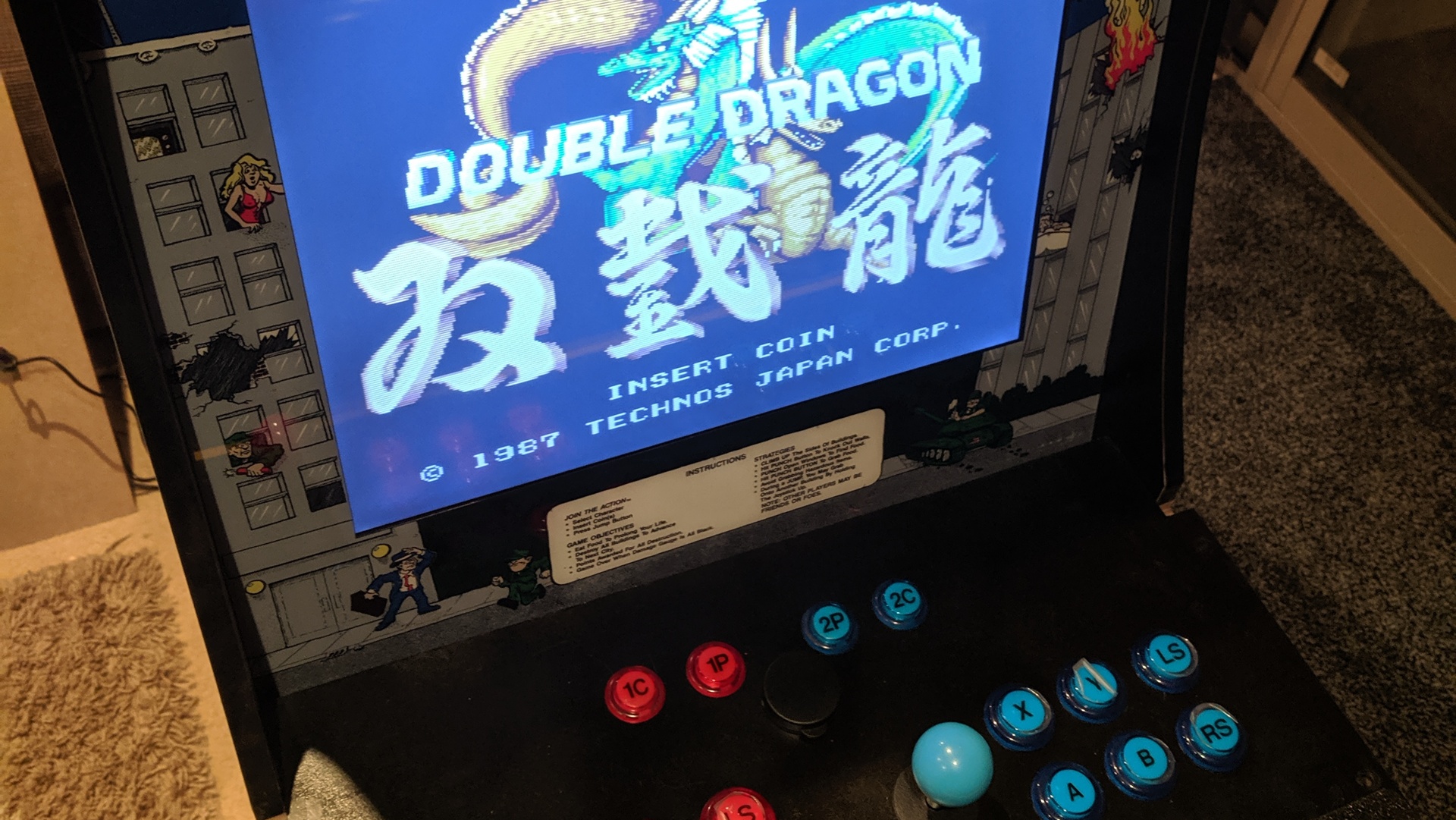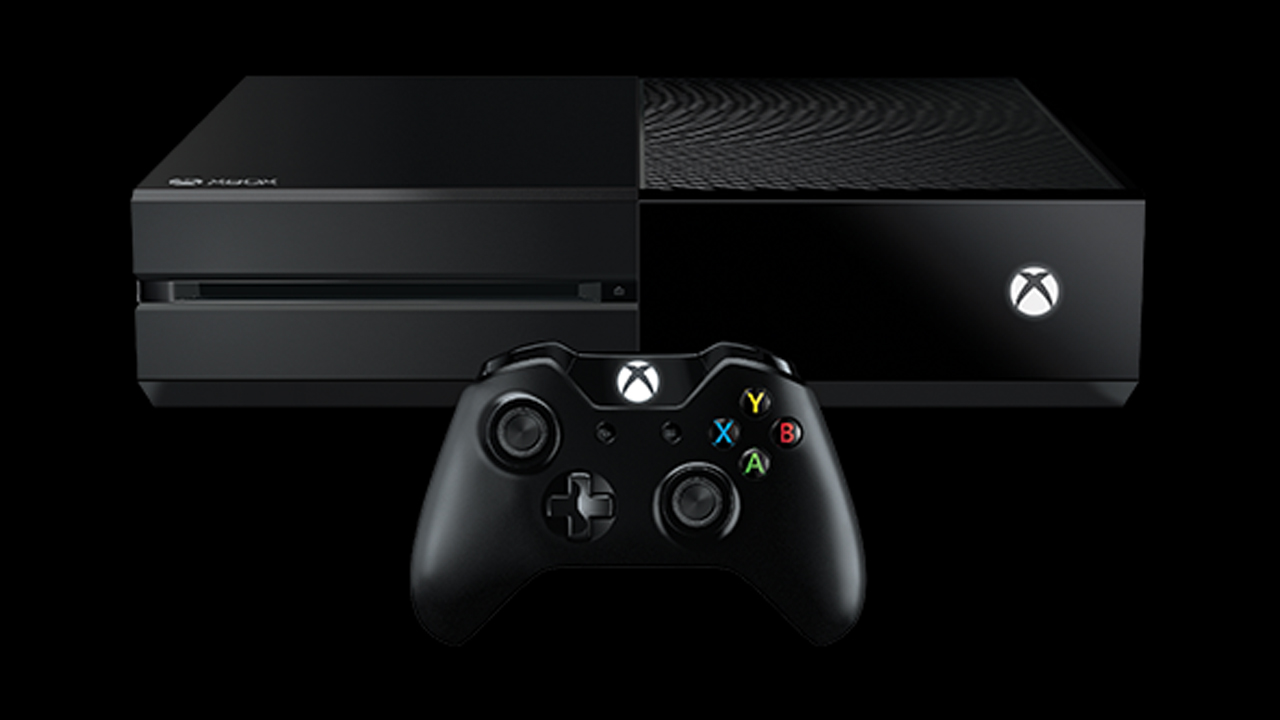Though times have thankfully changed since I started my “Homebound” lists, I’ll keep going with things while I work through my favourites. This one was a long time coming and should have been out sooner but seeing as I’ve been playing recently on my new-old computer I can’t really let it sit for much longer. 😉
For me the Atari ST was the machine that helped lead me into my career. I used to it to first program prolifically (in GFA Basic), make word processing a regular part of my work and studies, dial into my university system for assignments and play a pile of games.
The ST was also the first time I had a computer that was home to a constant stream of arcade conversions thanks to the prolific UK development scene which produced a lot of games that in the 8bit era I would have missed. After seeing friends enjoy these benefits previously on the Commodore 64 it was great to be part of the crowd waiting on the next big game to release. I can’t understate the importance of the UK and Europe during this era in supporting home computer platforms – they not only supplied players in their region with a constant stream of games (both original and ported) but other regions like Australia benefited immensely from it too.
Many of the games on the ST that I have the fondest memories for were actually ones that came bundled with the machine in the first place. The “Power Pack” bundle contained a number of quality games, including arcade conversions in this list, that meant many owners had little need to buy additional games for a long time if what was in the package served their needs. It was an incredible deal for the public but maybe not as great a deal for publishers wanting to sell you new games. Still… I have a lot of happy memories from playing those games so for me it was well worth it. 🙂

Dungeon Master
There were plenty of dungeon crawlers, even third person perspective ones, before Dungeon Master but it’s combination of an amazing presentation, real time combat, use of mouse control that made sense and challenges that often required you to physically interact with the in game world in interesting ways… well… with the mouse anyway. You need to assemble up to four adventurers to delve deep into the dungeon, fighting past monsters and negotiating traps to recover the Firestaff from Lord Chaos. A unique magic system allowed players to learn spells and create potions – and with every character having some level of ability it became useful to get acquainted with it early. All in all it’s a highly atmospheric RPG with plenty of detail and lots of challenges to face. Being one of the highest selling games ever on the platform is a good sign it’s a great game too.
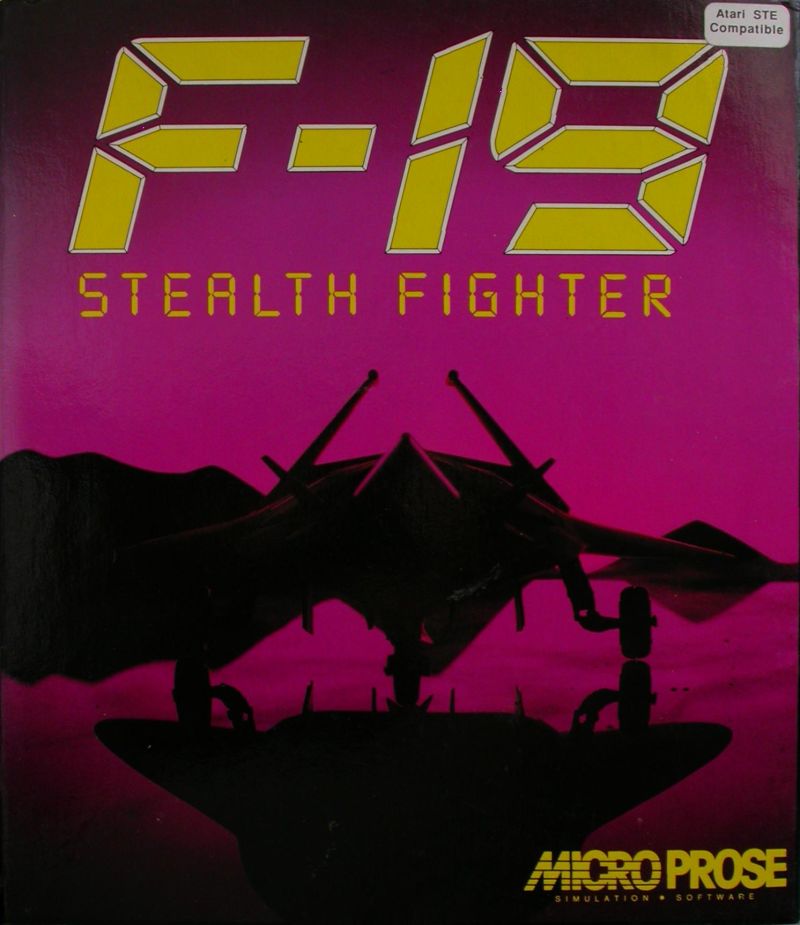
F-19 Stealth Fighter
You just need to look at the chunky manual that accompanied F-19 Stealth Fighter to understand the Microprose were intent about making a game that would take it’s subject matter as seriously as was technically possible. Flying a stealth fighter would force a player to play more strategically during the course of missions as evading detection for as long as possible could be key to mission success. When a game has a button for you to manually open the doors to your weapons bay, because it increases your chances of detection, you know it’s not cutting corners. This, with Midwinter, was probably one of the last big box Microprose games I’d own with its chunky manuals and I do miss that as the shift to digital formats has meant we’ve lost a lot of the cool additions to games that helped elevate them past their technical limitations.

Midwinter
It’s you versus a military coup on an island in the middle of a nuclear winter… simple stuff, right? A lot of games in the era might have chosen such a theme for scrolling shooter, or a strategy game but Midwinter puts you in the boots of the man responsible for stopping it. Its chunky polygons might seem a little too ambitious for a game on the humble ST but the limited palette of a winter landscape works really well in making the game one of the better looking 3D titles of the time. I still wish we’d seen a modern take on it because it’d totally work.

F29 Retaliator
There certainly wasn’t a shortage of flight simulators on the ST but this was a rare dip into the genre at the time from publisher Ocean. It won me over quickly though thanks to it’s impressive graphics and (for me at the time) a much gentler learning curve. F29 Retaliator allowed players take on campaigns using planes based on the F22 and experimental X29 fighters and it kept me busy for a long time and truth be told… I may have played this more than F-19 Stealth Fighter.
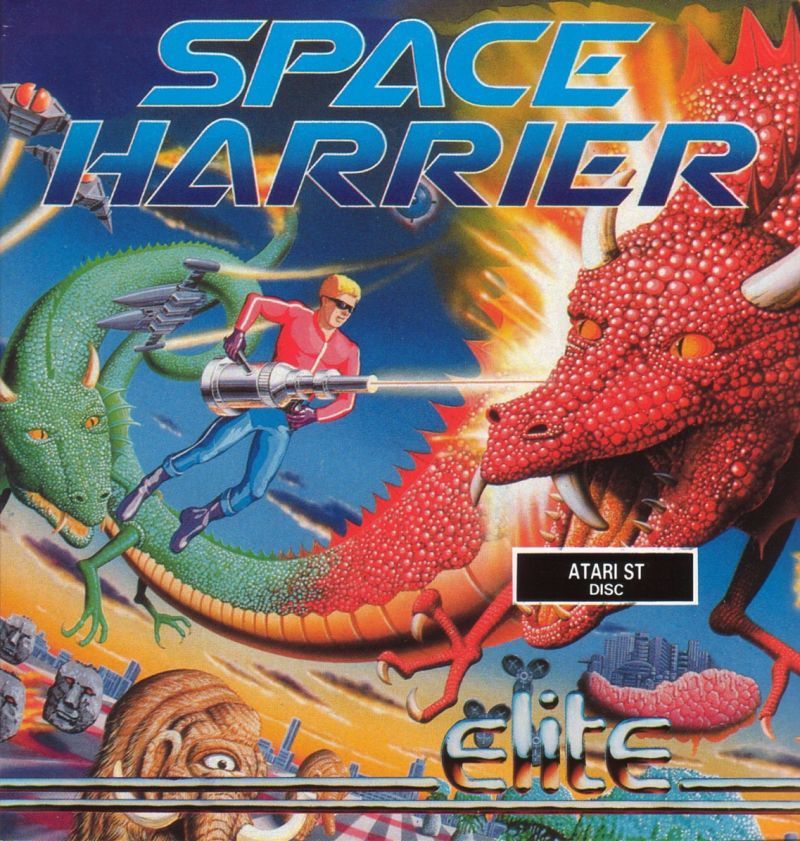
Space Harrier
This arcade conversions of the Sega coin-op classic did a great job of bringing the experience to the ST with some big sprites and vibrant colours but what really sold me on Space Harrier was the mouse controls. This allowed a degree of precision that joysticks of the era just couldn’t match and made it a much different experience that showed the mouse could work well enough as a trackball like controller. Not all arcade games that included mouse controls succeeded as well (Hard Drivin’ was BAD) but there were plenty of others like Arkanoid and the Star Wars arcade game that made it work perfectly.

R-Type
I’m not great at playing R-Type but am determined! I do have the first level of the arcade game stuck firmly in my head and it’s the one that I can complete consistently even after all these years. Second stage it gets to 50/50 odds then after that it takes a sharp dive. I have only ever completed the lot via the Xbox 360 version which provided some useful assists but doesn’t feel quite the same as tackling it with limited lives and the punishing restarts. The ST version might not be the prettiest version of the era but I think it compares really well to the original.
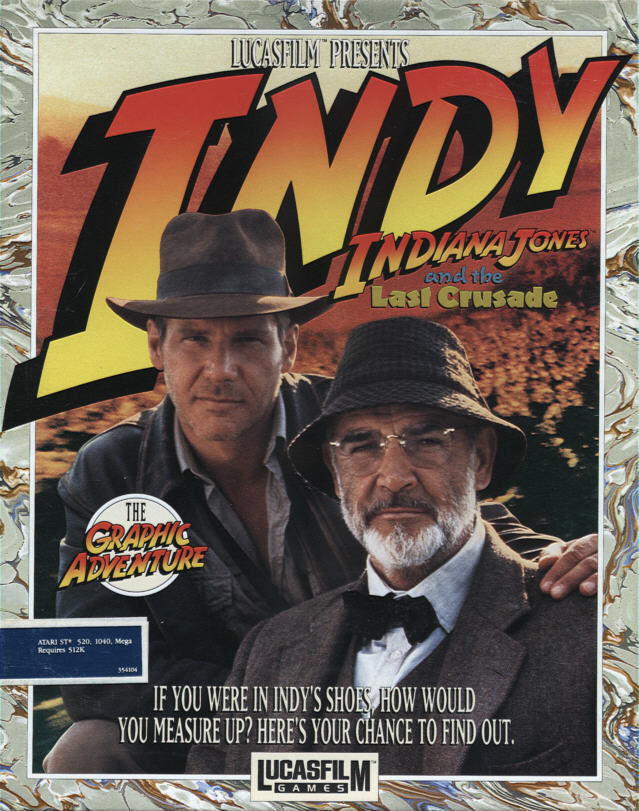
Indiana Jones and The Last Crusade: The Graphic Adventure
Though I would spend more time playing the Lucasfilm/LucasArts adventure games later on PC a great number of them appeared on the ST. It was their attempt at bringing the movie Indiana Jones and The Last Crusade to an adventure game (note: there was also “The Action Game” too) that was pretty fascinating as it not only pulled directly from the film but also included alternate paths and even an item or two that were left on the cutting room floor. One of the most memorable parts of the game was the copy protection (!) which took the form of a replica of the Grail Diary from the movie – not only did it contain many of the pages fans would have seen seen but there were articles and notes that would help you solve the game’s final puzzle which would change each time you played. The ST held up pretty well against the superior Amiga and PC versions and I still think fondly of this game with its tinny rendition of the Raider’s March and 16 colour graphics.

Starglider 2
While the original Starglider clearly showed it’s arcade influences backed up by some impressive wireframe 3D graphics it was the sequel that would take things to a whole new level with filled polygons and the ability to travel throughout a solar system. It may not have been the first or even the best 3D games on the system but I think Starglider 2 was possibly one of the prettiest. Items exploding into a shower of triangles really showed how it was a step above its wireframe predecessor. I seem to remember being transfixed by the image of my ship’s pilot chair bouncing around a tunnel I had embarrassingly destroyed my ship within…

Eliminator
The vanishing point racer/shooter Eliminator succeeds by bringing an arcade game experience that plays well to the ST’s capabilities. It’s colourful and carries a distinctive chiptune that I now have stuck in my head again. 🙂 What really sold me was just how well the movement felt – your ship may have been a few pixels on the screen but it responded both quickly and smoothly to your input. I have a yoke controller for the ST called the “Zoomer” which would get used for this game more that anything else because it just “felt right”. The game’s developer (John M. Phillips) would also make another game in Nebulus that would absorb a lot of my time too.

Llamatron 2112
Jeff Minter’s first crack at shareware is an absolutely stellar take on the classic Robotron 2084. The moment you start playing you know it’s not taking any short cuts on the audiovisual front with a constant assault of bright flashing colours and sampled sound making this a game to attract attention on a big screen with the sound turned up. I never knew what sound a Mandelbrot set makes when you shoot it and thanks to playing Llamatron 2112 I damn well won’t forget it either. 🙂 The default control system (autofire with the button for direction lock) plays smartly to the limitations of the Atari style single button joysticks. It works so well that you can happily smash through the game without any concern about the controls holding you back. This game made me learn to love Robotron again and I still have to jump into it whenever I have an ST running.
Special mentions

Star Wars
The arcade conversion of Star Wars is another great game to show how well the mouse can work as a controller while bringing an experience that was fairly close to the arcade game. While the wireframe models were a lot less detailed than the arcade versions they were detailed enough to be identifiable and it moved at a fairly good pace. Of the three Atari arcade games this one still stands as the best of them as it plays to the strengths of the 3D style graphics while offering a clear difficulty progression.

Double Dragon
Yet another Power Pack game in this list but where other games listed probably showed the ST in a more positive light the arcade conversion of Double Dragon was maybe a little “janky”, to use the technical term! Thing is though that it didn’t stop me from enjoying the game immensely and playing through it several times. It was almost therapeutic being able to smash through the hordes with the all conquering elbow strike. I had a lot of fun with it and that’s all that matters in the end.
There are still a lot more games I could go into and I might even think about revising the list again in the future. Lotus STE, the update to Lotus Esprit Turbo Challenge with STE hardware support, is incredible work and now that I’m finally playing it I can’t help but be impressed with the jump in quality. And there’s a substantial number of games now converted to run off newer devices where load speeds alone can also change the experience – yes to Dragon’s Lair with no disk swapping! Now I’m talking about all these I think I need to start playing some games again. 🙂
Box images found via Moby Games.
